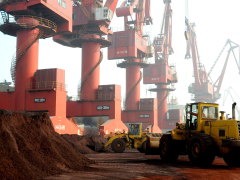China’s export of rare earth elements is central to the trade deal struck this week with the United States.
Beijing has a virtual monopoly on the supply of the critical minerals, which are used to make everything from cars to drones and wind turbines.
Earlier this year, Beijing leveraged its dominance of the sector to hit back at US President Donald Trump’s sweeping tariffs, placing export controls on seven rare earths and related products.
The restrictions created a headache for global manufacturers, particularly automakers, who rely on the materials.
After talks in Geneva in May, the US and China announced a 90-day pause on their escalating tit-for-tat tariffs, during which time US levies would be reduced from 145 percent to 30 percent and Chinese duties from 125 percent to 10 percent.
The truce had appeared to be in jeopardy in recent weeks after Washington accused Beijing of not moving fast enough to ease its restrictions on rare earths exports.
After two days of marathon talks in London, the two sides on Wednesday announced a “framework” to get trade back on track.
Trump said the deal would see rare earth minerals “supplied, up front,” though many details of the agreement are still unclear.
What are rare earths, and why are they important?
Rare earths are a group of 17 elements that are essential to numerous manufacturing industries.
The auto industry has become particularly reliant on rare-earth magnets for steering systems, engines, brakes and many other parts.
China has long dominated the mining and processing of rare earth minerals, as well as the production of related components like rare earth magnets.
It mines about 70 percent of the world’s rare earths and processes approximately 90 percent of the supply. China also maintains near-total control over the supply of heavy rare earths, including dysprosium and terbium.
China’s hold over the industry had been a concern for the US and other countries for some time, but their alarm grew after Beijing imposed export controls in April.
The restrictions affected supplies of samarium, gadolinium, terbium, dysprosium, lutetium, scandium, and yttrium, and required companies shipping materials and finished products overseas to obtain export licences.
The restrictions followed a similar move by China in February, when it placed export controls on tungsten, bismuth and three other “niche metals”.
While news of a deal on rare earths signals a potential reprieve for manufacturers, the details of its implementation remain largely unclear.
What has been the impact of the export restrictions?
Chinese customs data shows the sale of rare earths to the US dropped 37 percent in April, while the sale of rare earth magnets fell 58 percent for the





